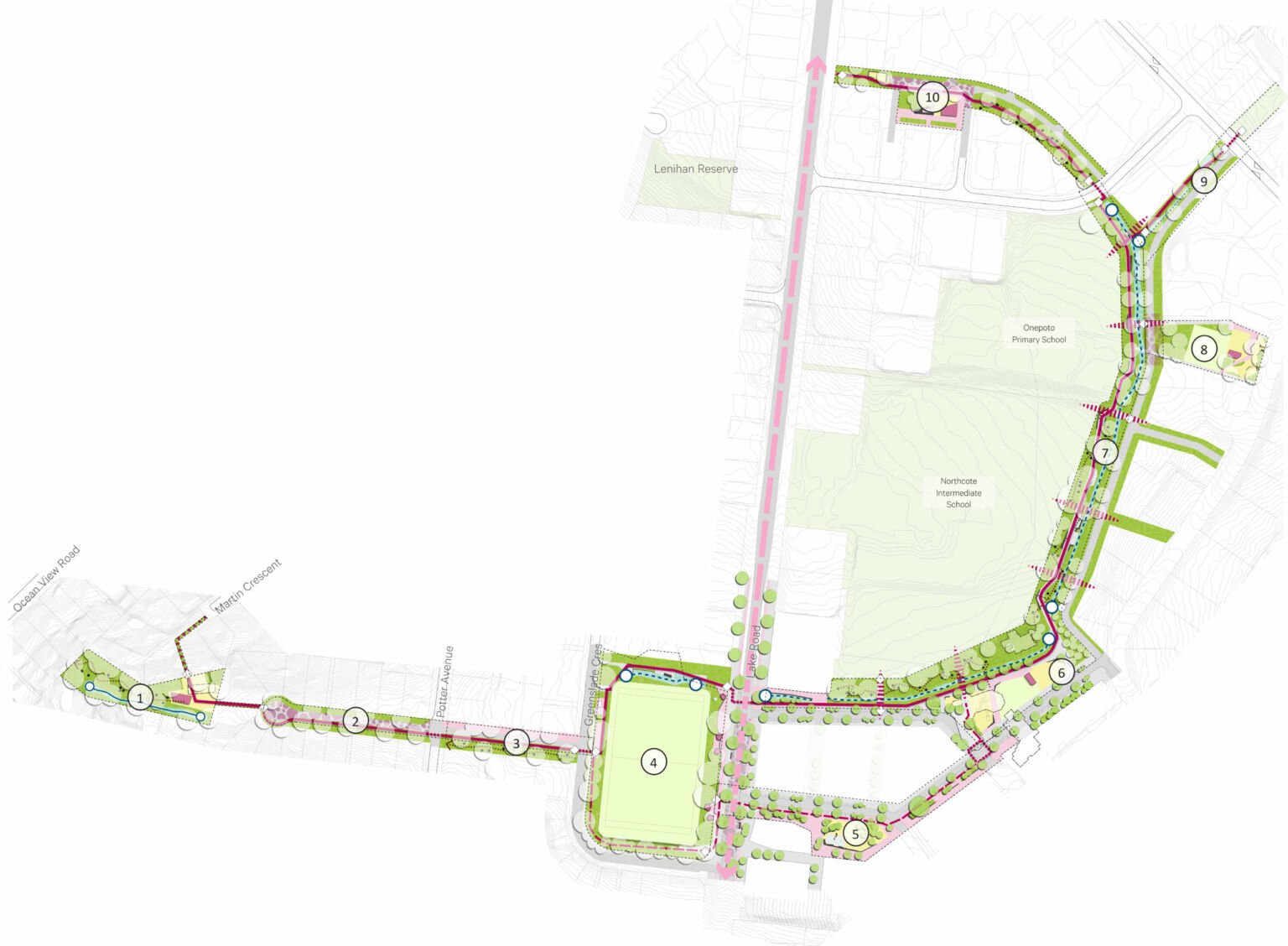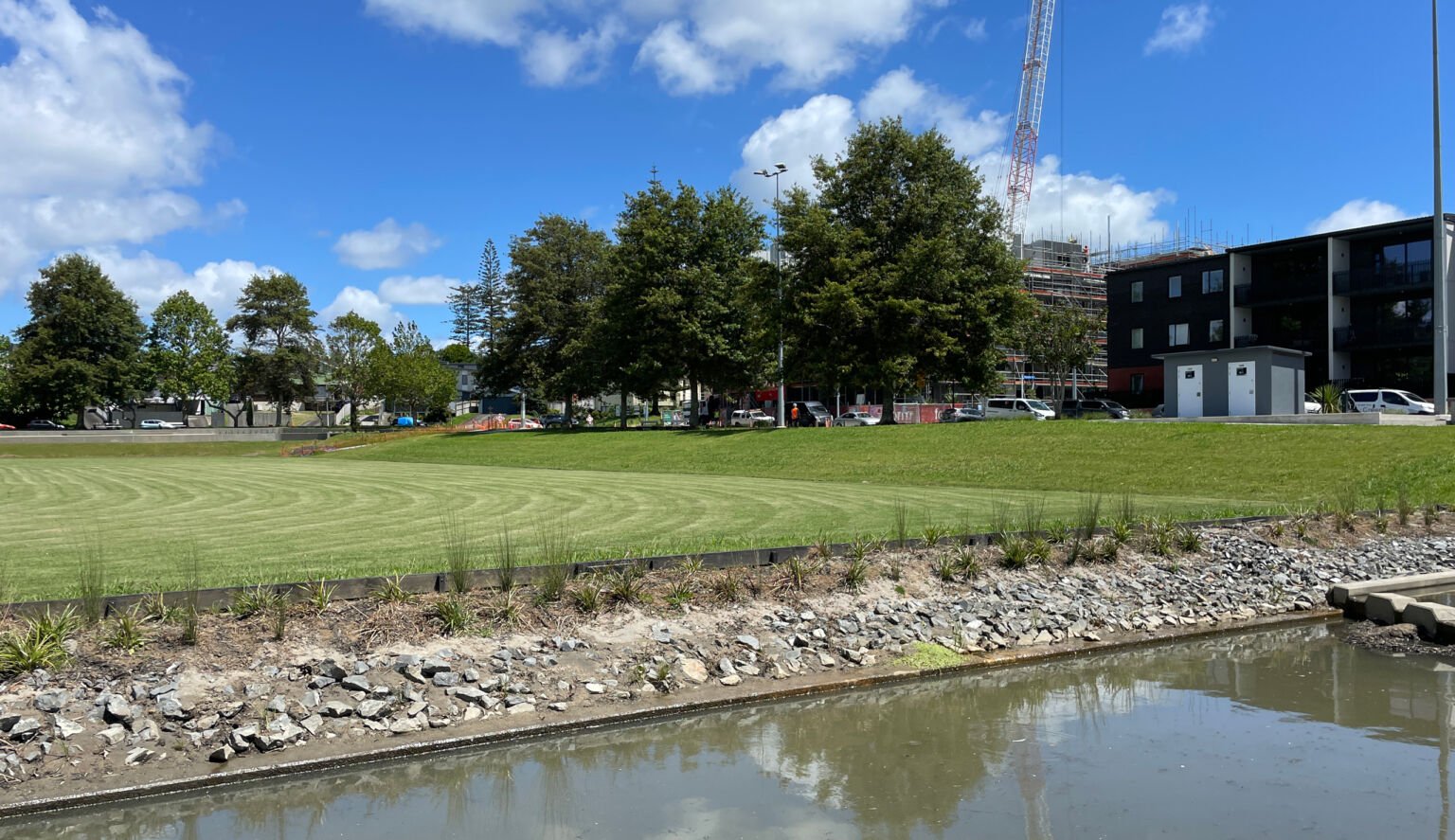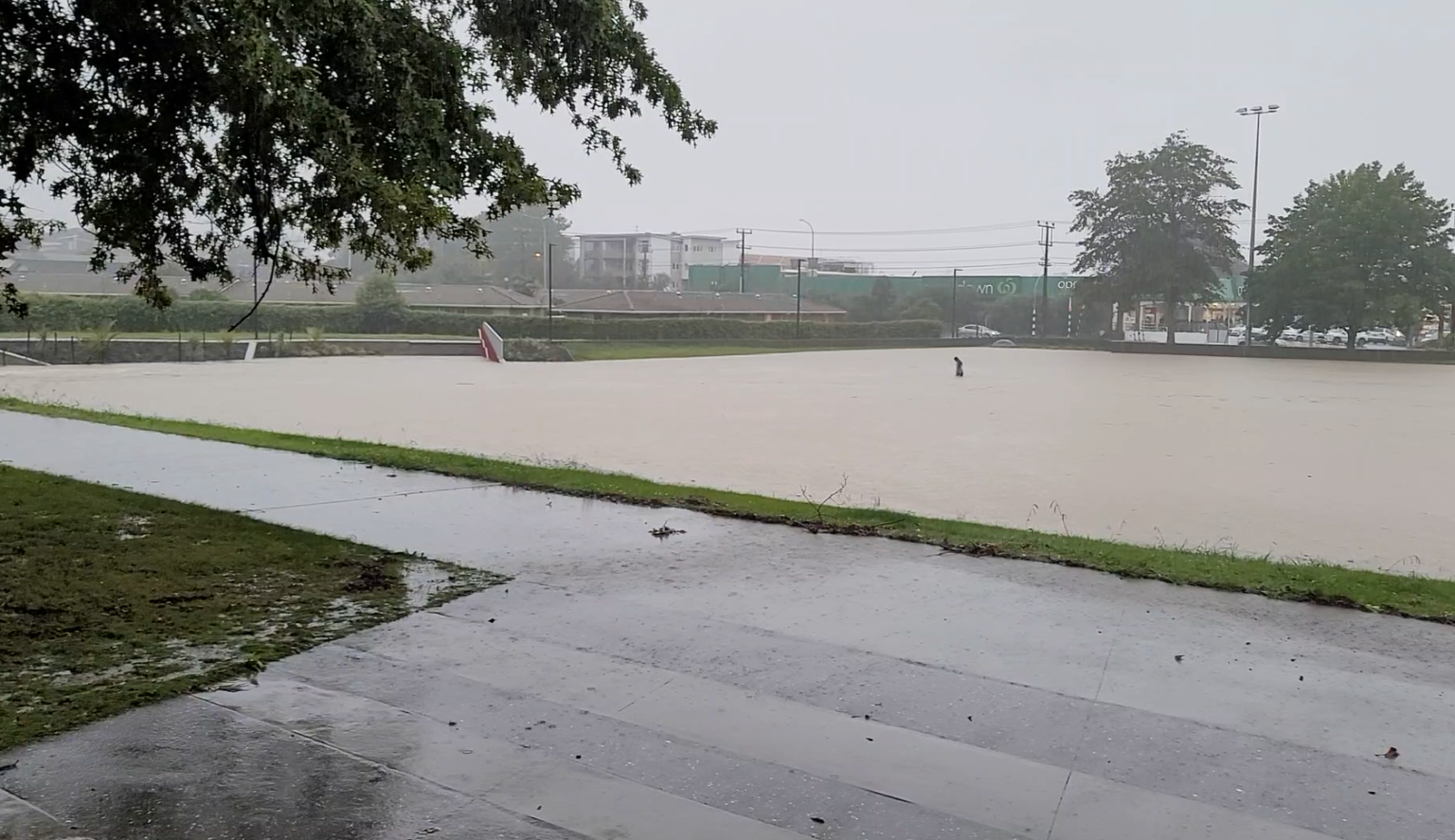Northcote’s landscape infrastructure in action
Northcote’s 1.5km green spine—Te Ara Awataha—takes an integrated and ecological approach to infrastructure. Isthmus Senior Landscape Architect Zach Barker explains how Greenslade Reserve’s stormwater infrastructure performed in the January flood event in Auckland.
Traditional stormwater infrastructure—often found underground or at the periphery of urban centres—remains largely invisible until the moment it fails. In the case of the recent flooding events in Tāmaki (January 2023) this failure had catastrophic and tragic results. 245mm of rain fell in one day shattering the previous highest recorded rainfalls.
The stormwater network didn’t stand a chance. Modernising Aotearoa’s stormwater infrastructure will take several decades and billions of dollars, but as the recent storms have highlighted, we urgently need high performing solutions.
Northcote’s green spine—Te Ara Awataha - on Auckland’s North Shore.
We must build resilience into our stormwater systems by moving from expensive centralised infrastructure towards holistic solutions that work with nature to manage stormwater as close to the source as possible. Detaining before conveying—also known as sponging—is key to abating stress on our existing piped networks.
Using a holistic design approach Isthmus has been helping to retrofit stormwater detention and treatment into existing (sub)urban spaces, managing flooding through systems that mimic the natural water cycle. Greenslade Reserve in Northcote town centre, (4) on the plan below, had only been completed for a few weeks before the cyclone hit—and it immediately proved it’s worth. Greenslade integrates stormwater management with recreation and ecology—working with natural systems to manage stormwater, the space is an appealing everyday community landscape that doubles as a gigantic stormwater detention pond in a flood event.
Awataha Greenway Reference Plan
1 Jessie Tonar Scout Reserve
(Kākā Reserve)
2 Kākā Street
3 Kākā Street extension
4 Greenslade Reserve
5 Town Centre
6 Cadness Reserve
7 Schools Edge
8 Cadness Loop Reserve
9 Link to Hato Petera College
10 Richardson Park
Jointly delivered by Eke Panuku and Kāinga Ora the existing reserve was scooped out and reformed in a close collaboration between Isthmus landscape architects, WSP’s engineers, Auckland Council’s Healthy Waters team, mana whenua and the Kaipātiki Local Board.
Under normal conditions the wetland planting treats and improves water quality before stormwater continues downstream. The planted terraces filter out sediment and other pollutants by detaining the first flush of runoff (which contains the highest concentration of pollutants). Improved water quality provides a valuable habitat for birds, insects and aquatic life, reconnecting the community to this lost environmental taonga.
Adjacent to the wetland terraces, the rugby league pitch has been lowered by one metre to act as a detention reservoir, significantly boosting neighbourhood flood resilience. The system can hold 12 million litres of water before slowing releasing it downstream.
Only just completed, the reserve has already been pushed to its limit with two ‘once-in-a-lifetime’ storm events. While not able to fully mitigate the effects of the recent one-in-500-year downpour, the detention system kept a massive volume of water out from the town centre and helped to avert more serious flood damage.
As the planet warms, intense rainfall events and flash flooding is predicted to significantly increase. In Auckland, for every degree of global warming, the intensity of short-duration storms is projected to increase by 14%. Resilient cities start with resilient infrastructure. We must continue to upgrade our current system of unsustainable, one-dimensional grey infrastructure to a more resilient, more integrated landscape infrastructure. Greenslade Reserve / Te Ara Awataha demonstrates the immediate and ongoing benefits of a holistic approach to stormwater management.
After the January 27 storm - Downstream of Greenslade, the Awataha Stream—daylighted for the first time in 70+ years—returns to its regular flow. Planting protected the sloping soil from erosion and help to dissipate the stormwaters energy as it flowed downstream.
The design has been retrofitted into an existing neighbourhood and in addition to the stormwater benefits it also improves the local ecology and adds recreational benefits.
Auckland Council and Eke Panuku’s collaboration and commitment to this approach has created an exemplar project at Northcote that all of Tāmaki Makaurau can learn from.




